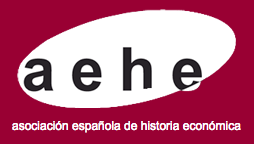Regional differences in the cost of living in Argentina in the early 20th century
DOI:
https://doi.org/10.1016/j.ihe.2013.08.002Keywords:
Prices, Food, Argentina, Provinces, E31, N36, N96Abstract
The analysis of the living standards in Argentina in the late 19th and early 20th century is hindered by the lack of a consistent comparison of prices across regions. In this article we calculate price indexes of food for several cities in several years between 1903 and 1912 using data from the Bulletins of the National Labor Department.
Although local price indices follow a pattern with common characteristics, both the price levels and the inflation rates are quite specific of each province. Cities in the central region of the country and with a relatively large population (Buenos Aires, Santa Fe, Cordoba) have lower price levels than the cities in the peripheral areas of the country and with a smaller size (San Juan, Posadas, Jujuy). Moreover, those areas with larger sectors of livestock and wheat production tend to have lower prices of meat and bread and, consequently, lower price levels.
Downloads
How to Cite
Issue
Section
License
Aquellos autores/as que tengan publicaciones con esta revista, aceptan los términos siguientes
- Los autores/as conservarán sus derechos de autor y garantizarán a la revista el derecho de primera publicación de su obra, el cuál estará simultáneamente sujeto a la Licencia de reconocimiento de Creative Commons Reconocimiento-No comercial-Sin obra derivada 4.0 Internacional que permite a terceros compartir la obra siempre que se indique su autor y su primera publicación esta revista, y no permite hacer uso comercial de la misma ni tampoco obras derivadas.
- Los autores/as podrán adoptar otros acuerdos de licencia no exclusiva de distribución de la versión de la obra publicada (p. ej.: depositarla en un archivo telemático institucional o publicarla en un volumen monográfico) siempre que se indique la publicación inicial en esta revista.
Plagio y fraude científico
La publicación de un trabajo que atente contra los derechos de propiedad intelectual será responsabilidad de los autores/as, que serán los que asuman los conflictos que pudieran tener lugar por razones de derechos de autor. Los conflictos más importantes pueden darse por la comisión de plagios y fraudes científicos.
Se entiende por plagio:
- Presentar el trabajo ajeno como propio.
- Adoptar palabras o ideas de otros autores sin el debido reconocimiento.
- No emplear las comillas u otro formato distintivo en una cita literal.
- Dar información incorrecta sobre la verdadera fuente de una cita.
- El parafraseo de una fuente sin mencionar la fuente.
- El parafraseo abusivo, incluso si se menciona la fuente.
Las prácticas constitutivas de fraude científico son las siguientes:
- Fabricación, falsificación u omisión de datos y plagio.
- Publicación duplicada.
- Conflictos de autoría.





